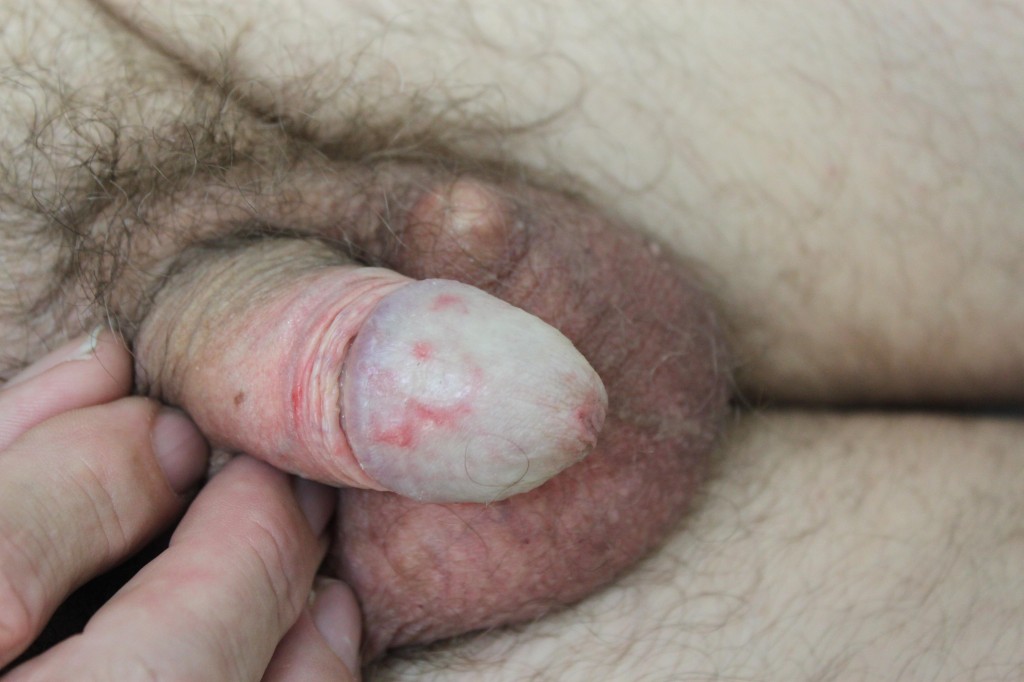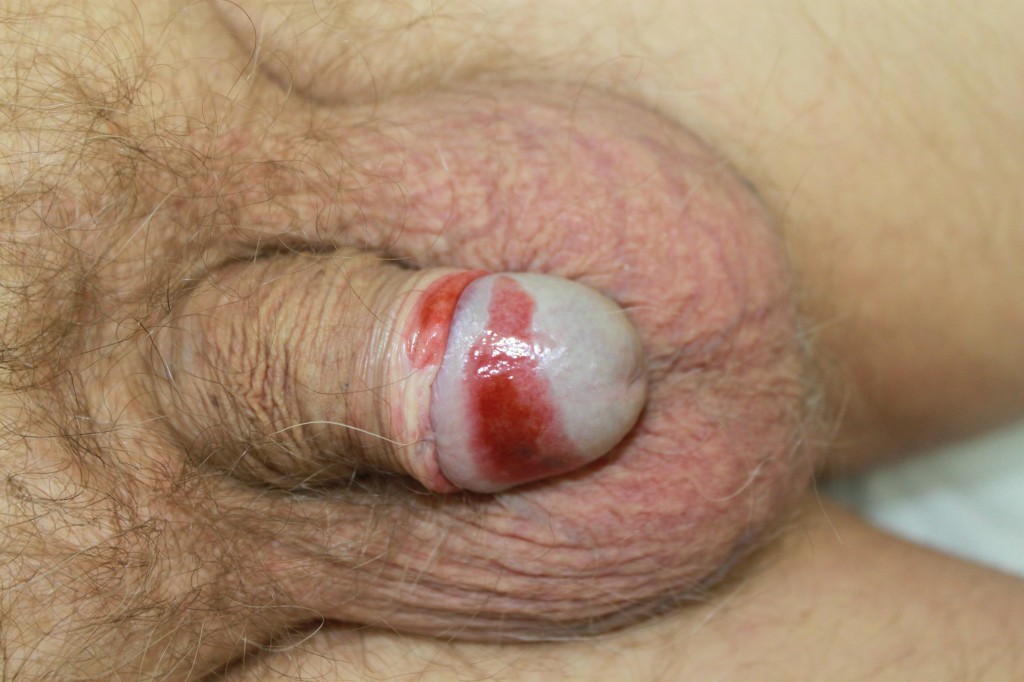Last Updated: January 2024
What are balanitis and balano-posthitis?
Balanitis is inflammation of the glans penis (head or knob) of the male penis. In uncircumcised men (the foreskin or “prepuce” is still present), inflammation of both the glans and the foreskin together is called balano-posthitis.
Who gets balanitis and balano-posthitis?
True balantis alone in circumcised males is an uncommon disease whereas uncircumcised men are at increased risk of developing both balanitis and balano-posthitis. In uncircumcised males, microorganisms, epithelial debris, and secretions may accumulate between the glans penis and overlying prepuce.
What causes balanitis and balano-posthitis?
Balanitis and balano-posthitis may be caused by infectious and non-infectious diseases.
Non-infectious skin conditions, such as dermatitis (or eczema) or psoriasis are the most common cause of balanitis and balano-posthitis. Other causes may include, but not limited to:
- fungal infections of genital skin if uncircumcised, such as candidiasis or “thrush”. However, candidiasis or “thrush” is very unusual in circumcised men and not common in uncircumcised men.
- non-infectious inflammatory conditions found on the penis including lichen sclerosus, lichen planus and Zoon’s plasma cell balanitis.
- occasionally due to tablets taken by mouth (fixed drug eruption).
- pre-cancerous skin conditions, such as in-situ squamous cell carcinoma or penile intra-epithelial neoplasia (“PIN”).
- Sexually transmissible diseases (STDs) are only rarely a cause of balanitis or balano-posthitis.
What do balanitis and balano-posthitis look like?
The clinical features of balanitis and balano-posthitis vary depending on the specific cause.
Inflammation of the glans penis or foreskin may cause redness, itching, discomfort, flaking of skin, swelling or soreness.
Balano-posthitis in uncircumcised male due to lichen sclerosus may cause difficulty in retracting the foreskin, resulting in discomfort and difficulty with erections and sexual activity.

Figure 1. Irritant dermatitis of glans & foreskin (prepuce) – Image reproduced with permission of A/Prof Anthony Hall

Figure 2. Zoon’s balanitis – Image reproduced with permission of A/Prof Anthony Hall
How are balanitis and balano-posthitis diagnosed?
Balanitis and balano-posthitis are usually diagnosed clinically.
A skin swab may be necessary if candida or bacterial infection is suspected. .
As balanitis and balano-posthitis are only rarely caused by a sexually acquired diseases (“STD”), sexually acquired disease tests do not usually help in making a diagnosis. If an associated sexually acquired disease is suspected, then blood tests and specific swabs are necessary.
A skin biopsy of the glans penis or foreskin is occasionally necessary if pre-cancerous disease or cancer is suspected, but should only be performed by a doctor experienced in this technique.
Skin patch testing is only necessary if an allergic substance is suspected.
How are balanitis and balano-posthitis treated?
Treatment options will vary depending on the individual and their needs.
General measures for non-specific balanitis treatment include:
- Replace soap with a non-soap wash, combined with regularly applying soft white paraffin ointment (also known as petrolatum or Vaseline® ointment) under the foreskin after showering or bathing. Soft white paraffin ointment (petrolatum or Vaseline® ointment) can also be used as a lubricant for sexual activity.
- Stop any unnecessary over-the-counter creams or potions, particularly if they contain perfumes or fragrances.
- Avoid using all “baby wipes” as these can be irritating and may lead to allergic contact dermatitis. Importantly, avoid any proven allergic substance.
Other treatment options for balanitis and balano-posthitis may include:
- Topical corticosteroid ointment or cream preparation of various strengths
- A topical antifungal cream is useful if candida is the cause, such as topical clotrimaszole 1% cream.
More difficult or serious causes of balanitis or balano-posthitis need specific treatment under the guidance of a dermatologist, particularly if a pre-cancerous genital skin disease is suspected.
What is the likely outcome of balanitis and balano-posthitis?
Most individuals with balanitis or balano-posthitis recover without complications with appropriate genital hygiene measures and treatment. For those who are uncircumcised, balano-posthitis may recur.
| Associate Professor Anthony Hall | January 2024 |
| Associate Professor Anthony Hall | March 2017 |
Disclaimer
2019 © Australasian College of Dermatologists.
You may use for personal use only. Please refer to our disclaimer.